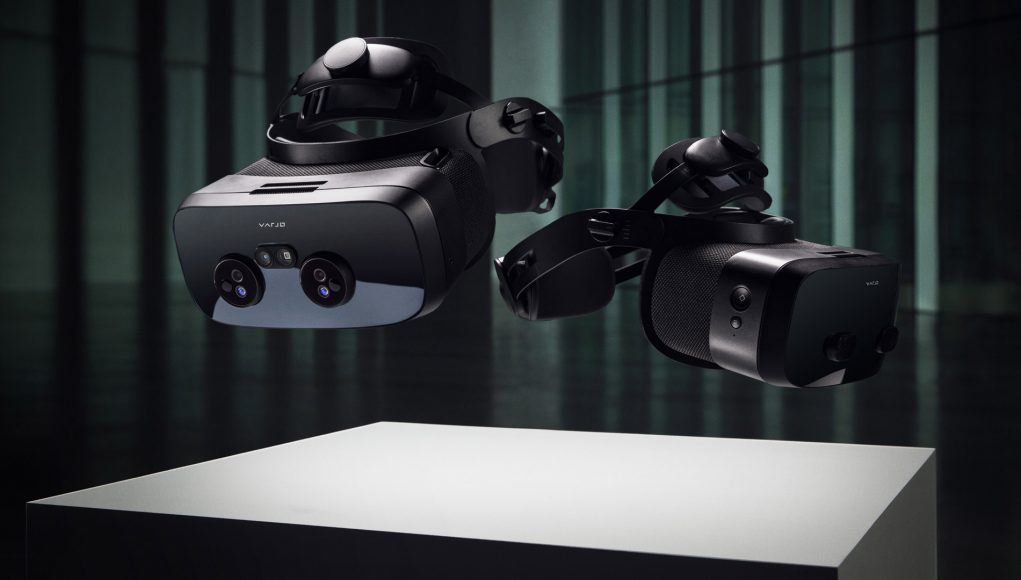Varjo today announced its latest high-end headsets, the XR-3 and VR-3, with a range of improvements including an expanded field of view, inside-out tracking, and a redesigned headstrap. While still expensive and definitely aimed at large enterprises, the new headsets also get a significant price reduction compared to prior models.
As far as XR headsets go, Varjo’s are quite unique. The company’s headsets use two displays for each eye: a high-density ‘focus’ display at the center, and a larger ‘context’ display to fill out the field of view to immersive levels. The two displays are blended together nearly seamlessly, allowing the very center of the field of view to achieve retina resolution that’s unmatched by any other headset on the market.
The company’s new XR-3 and VR-3 headsets—available for order today and due to start shipping in January—are based on the same concept, but push it further still by expanding the field of view of both the focus display (such that a larger area of the screen is retina resolution) and the context display (for a larger peripheral field of view). At the same time as expanding the field of view, the company has also boosted pixels per-degree across the board.
Boosted Field of View & Resolution
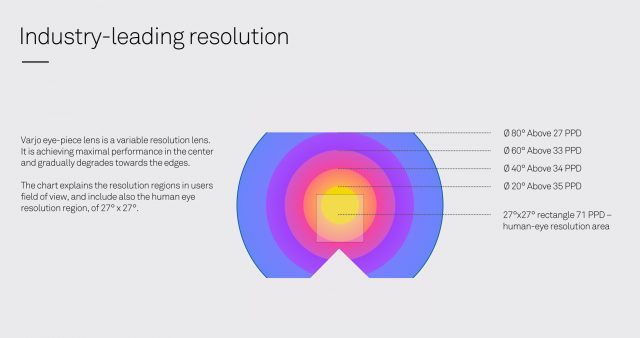
Compared to the company’s prior headsets, the XR-3 and VR-3 expand the FoV of the focus display (retina resolution area) from 26° × 16° (30.5° diagonal) to 27° × 27° (38° diagonal). At the same time, the focus display’s resolution is boosted from 62 pixels per-degree to 71 pixels per-degree, offering even finer resolving power (assuming your vision is sharp enough to appreciate it). From a resolution standpoint, the focus display is 1,920 × 1,920 @ 90Hz (compared to 1,920 × 1,080 previously).
As for the context display in the periphery, the field of view is boosted from 87° horizontal on Varjo’s prior headsets to 115° horizontal, the company says. And while the context display hasn’t yet crossed the retina resolution threshold of 60 PPD, it gets its own significant boost from 14 PPD to ~30 PPD. In terms of resolution, that’s an upgrade from 1,440 × 1,600 to 2,880 × 2,720 (both at 90Hz).
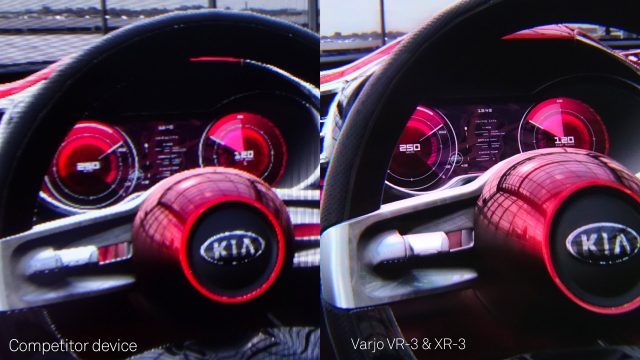
If you haven’t had a chance to look through Varjo’s headsets, it’s difficult to appreciate what all these numbers mean. For a coarse idea of relative resolving power we can consider the megapixels of the displays as compared to consumer headsets:
| Headset | Megapixels per-eye |
| Rift DK1 | 0.5 |
| Rift DK2 | 1.0 |
| Rift CV1 | 1.3 |
| Vive Pro | 2.3 |
| Rift S | 1.8 |
| Quest | 2.3 |
| Index | 2.3 |
| Quest 2 | 3.5 |
| Reverb G2 | 4.7 |
| Varjo XR-3/VR-3 | 9.7 |
That is to say: that’s Varjo’s headsets are far beyond anything in the consumer realm. And of course we’d hope so… given what they cost.
Lower Price (but still pricey)
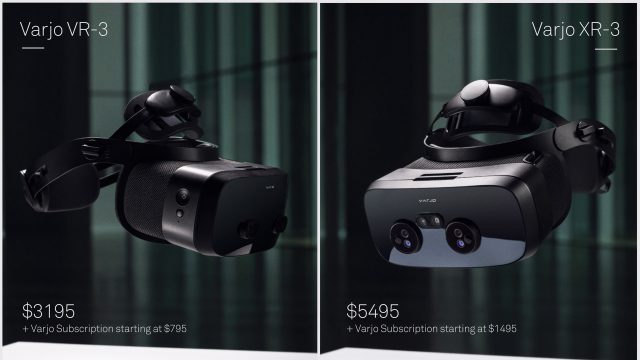
While Varjo’s new headsets aren’t cheap by any means, the company has managed to significantly drop the price despite boosting specs. Here’s the breakdown:
| Headset | Varjo VR-2 Pro | Varjo VR-3 | Varjo XR-1 | Varjo XR-3 |
| Purchase Price | $6,000 | $3,200 | $10,000 | $5,500 |
| Support (annual, required) | $1,000 | $800 | $1,000 | $1,500 |
| Total | $7,000 | $4,000 | $11,000 | $7,000 |
Both headsets are available for order starting today, with shipments expected to begin in January.
Eye-tracking, Automatic IPD, & More
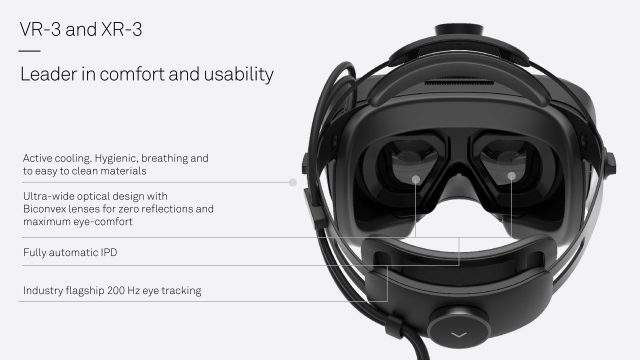
There’s no doubt these headsets are expensive, but Varjo is loading them full of premium features.
Like the company’s prior headsets, the XR-3 and VR-3 both feature 200Hz eye-tracking tech developed in-house, which the company claims is the “world’s fastest and most accurate” integrated eye-tracking solution. Eye-tracking is also used for foveated rendering and automatic IPD adjustment, allowing the bi-convex lenses (not Fresnel) to align themselves with the user’s eyes for optimal clarity and comfort. Both headsets also include hand-tracking from Ultraleap.
XR-3 and VR-3 see a brand new industrial and ergonomic design, reducing weight by 40%, according to Varjo. The new headstrap uses a halo-like design with tightening dials on both the back and top strap.
Both headset’s displays also now boast pro-level color reproduction with 99% sRGB and 93% DCI-P3 color gamut.

